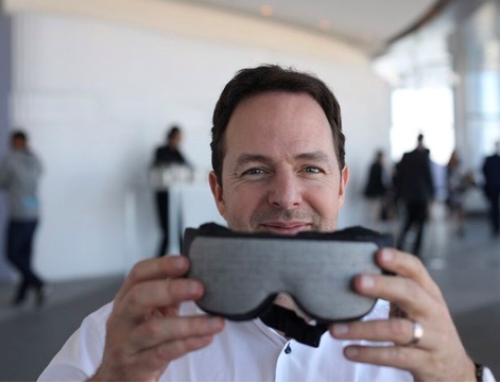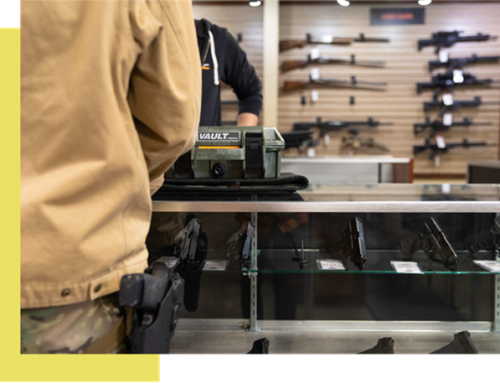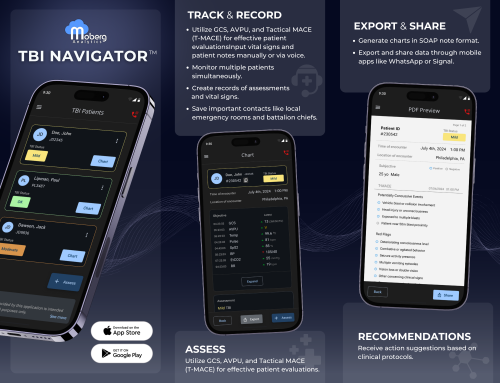With support from the Clinical and Rehabilitative Medicine Research Program and MTEC, Scientific & Biomedical Microsystems (SBM) has developed cutting-edge hardware and software platforms for high-density next generation neural recording and stimulation. On the basis of this development, SBM spun out Diagnostic Biochips, Inc. to focus on the commercialization of BCI platforms. SBM and Diagnostic Biochips maintain a collaborative relationship, often partnering on projects and proposals, but are independent of each other.
Brain Computer Interfaces (BCI) have long been recognized as potentially game-changing for the military. Specifically, for the rehabilitation of combat veterans, applications such as motor and visual prosthesis, thought-to-speech generation systems, and neuromodulation for disorders such as depression, TBI (traumatic brain injury) and PTSD (post-traumatic stress disorder) are no longer science fiction but are in fact currently under serious development and application to human clinical systems. SBM’s current program with MTEC involves the development of a prototype system for demonstrating CNS (central nervous system) visual prosthesis. A visual prosthesis is a system that produces meaningful “artificial sight” for blind patients by the stimulation of relevant neuronal pathways, in much the same way that cochlear implants (or auditory prostheses) are now implanted routinely to create artificial hearing in the deaf.
The current work has potential impact extending far beyond the possible development of a medical implant for visual prosthesis. When we commenced the project in 2017, there was no viable, commercial electrode solution that could satisfy the requirements for a high performing BCI, including neuronal-circuit-scale precision, simultaneous stimulation and record capability, and large numbers of recording and stimulation channels. While there is a lot of work ahead, SBM and our whole team have made enormous progress in developing and demonstrating a foundational technology that addresses these technology needs. The potential applications of this work are numerous, from improved neuromodulation systems, to clinical-grade visual and speech neuroprostheses, intraoperative monitoring, and improved “bioelectronic” treatments of neurodegenerative and other diseases.
Through the commercial spinout Diagnostic Biochips, we are currently seeking additional investment to obtain FDA clearance/approval for our technologies, to continue development, and to scale our manufacturing and distribution to current pre-clinical and medical device customers. From a technical perspective, we continue to work with collaborators to test and improve our technology in a variety of pre-clinical subjects, and to carry out early research in human volunteers (under IRB approval in major academic surgical centers.) We are applying to the NIH for funding under a variety of funding mechanisms, and based on our highly-successful partnership with MTEC we are seeking additional ways to work with the DoD on continuing to mature this technology in ways that can directly benefit the military.
This project was funded through MTEC’s Brain Machine Interface Request for Proposals (Solicitation #16-02-BMI).
About Scientific & Biomedical Microsystems:
SBM (Scientific & Biomedical Microsystems) was founded in 2006 to provide product development support in applications utilizing microtechnology and nanotechnology. We have supported a wide variety of commercial and government clients, worldwide. Past projects include working with NASA on the development of cutting-edge IR and x-ray detectors, with well-known life sciences companies to develop analytical instruments and diagnostic tools, and with start-ups on the development of novel implantable medical devices. This work has progressed with additional funding from contract-based R&D and grants with the HHMI (Howard Hughes Medical Institute), with NIH, and with the Department of Defense (DARPA). This project has been carried out successfully by a highly-collaborative team that has included members of industry, academia, and the government. These include project collaborators John Wolf (University of Pennsylvania), Kari Hoffman (Vanderbilt), Michael Long (NYU) and Pieter Roelfsema (Netherlands Institute of Neuroscience and Phosphoenix). Tahl Holzman (Cambridge Neurotech) was instrumental in bridging the gap between technology and users, and neurosurgeons Jeremy Greenlee and David Christianson at the University of Iowa have been steadfast advocates for early human proof-of-concept. Additional information about the company and platforms can be found here:
COMPANY: https://diagnosticbiochips.com/
General DBC company video: https://www.youtube.com/watch?v=5_nWc1VRxBQ&t=34s
Deep Array electrode: https://www.youtube.com/watch?v=UbEUIxwuOsY





